Warning: Undefined variable $k in /home/nginx/domains/wired2fishcom.bigscoots-staging.com/public/wp-content/themes/understrap-child-0.6.0/functions.php on line 984
Warning: Undefined variable $k in /home/nginx/domains/wired2fishcom.bigscoots-staging.com/public/wp-content/themes/understrap-child-0.6.0/functions.php on line 987
LiveScope has taught me so much about fish behavior this year. I feel like I’ve had an open window into their world and it has profoundly improved not only my bass fishing but my crappie fishing even more and just my general knowledge of fish habits.
This year was my first full season running Garmin electronics and my first full season running LiveScope. I have used Garmin’s electronics in the past, in fact my first boat had Garmin units on it back in 1997. I have fished with many great anglers with LiveScope and the original Panoptix. So I thought I was pretty fluent with the technology before this season.
What I didn’t realize was how much I would learn about fish from it. This year, I have been reinvigorated with fishing and learning. I’m a student of all things. If something new comes out, I read every piece of material I can on it. If I get a new lure, I spend countless hours figuring out what it can and cannot do well. If there is a subject I want to improve in my life or learn more about, I read. I knockout about 50 books a year on top of travel and a heavy workload.
But I think being a student of tackle, technique and technology is why some get so much out of their electronics and some can barely turn on their units. LiveScope and forward looking sonar is not a magic device that will load the boat with fish. It is a tool, that if you put a lot of time and effort into, will improve your knowledge and your fishing.
Here is a quick rundown of the things I found out about fish this season watching them react to lures realtime on my units.
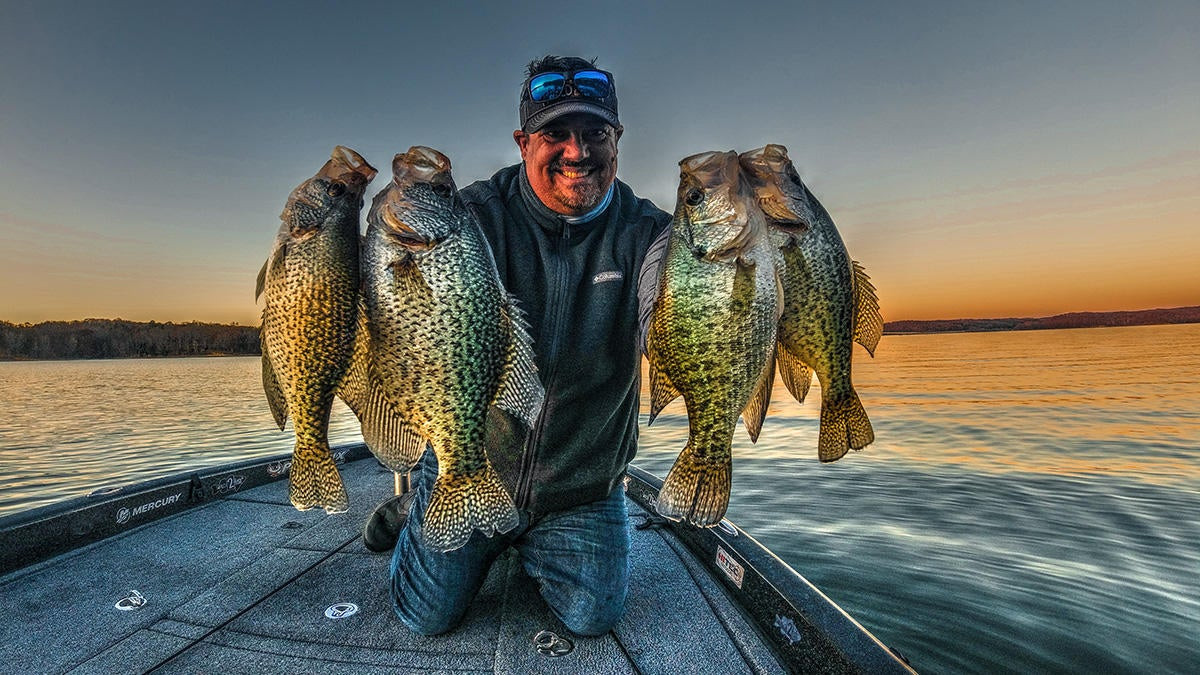
1. Fish Bite More from Impulse than Hunger
When we’re kids, we just assume all animals eat because they are hungry. As we get better at fishing, we realize we’re sometimes just agitating a fish into biting. With real-time sonar like LiveScope, I’ve found that “sometimes” can be replaced with “most of the time.”
I have pulled up to fish around big schools of bait and worked my bait down towards them and they react to it and bite. They were not feeding, just hanging out near the bait. When my bait got down there, however, thumping and twitching in the fish’s face, it impulsively reacted. It had all the food in the world to eat, and it did not react until my lure made it react.
I have seen firsthand how curious the fish are, how they follow, how they roll on a lure and turn off it just as quickly. It’s interesting to note their curiosity gets them more than their stomachs do.
I’ve also had several times where you switch from a swimbait to a jerkbait and get bit. Both looked like food, but one made the fish react when the other did not. It’s happened to me hundreds of times now with both bass and crappie.
And the crazy way in which a seemingly uninterested fish, charges out of nowhere and clobbers your bait on LiveScope never gets old.
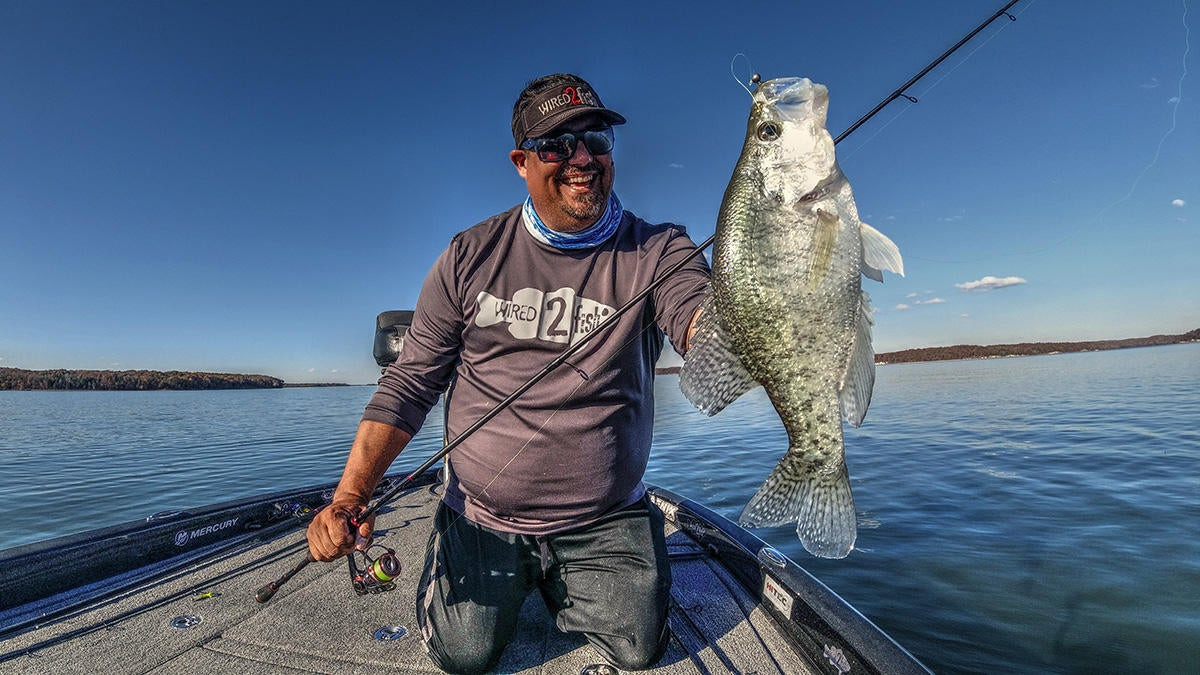
2. Fish Have Personalities
I’ve also realized that while fish are curious and impulsive, every fish is a unique individual. You can get two fish on two casts to react to a lure and the third pays it no mind. You can watch a fish not react to three different lures and presentations, and then when that fourth one comes by, it suddenly trips their trigger. Then the very next fish won’t look at it but the first lure you tried on the last fish works first cast.
They are individuals and they react accordingly. Watching my bait on the LiveScope screen and their behavior towards it has helped me cycle through retrieves, lures, and more until I either find the right bait or decide these fish can’t be coaxed into biting and you need to move on.
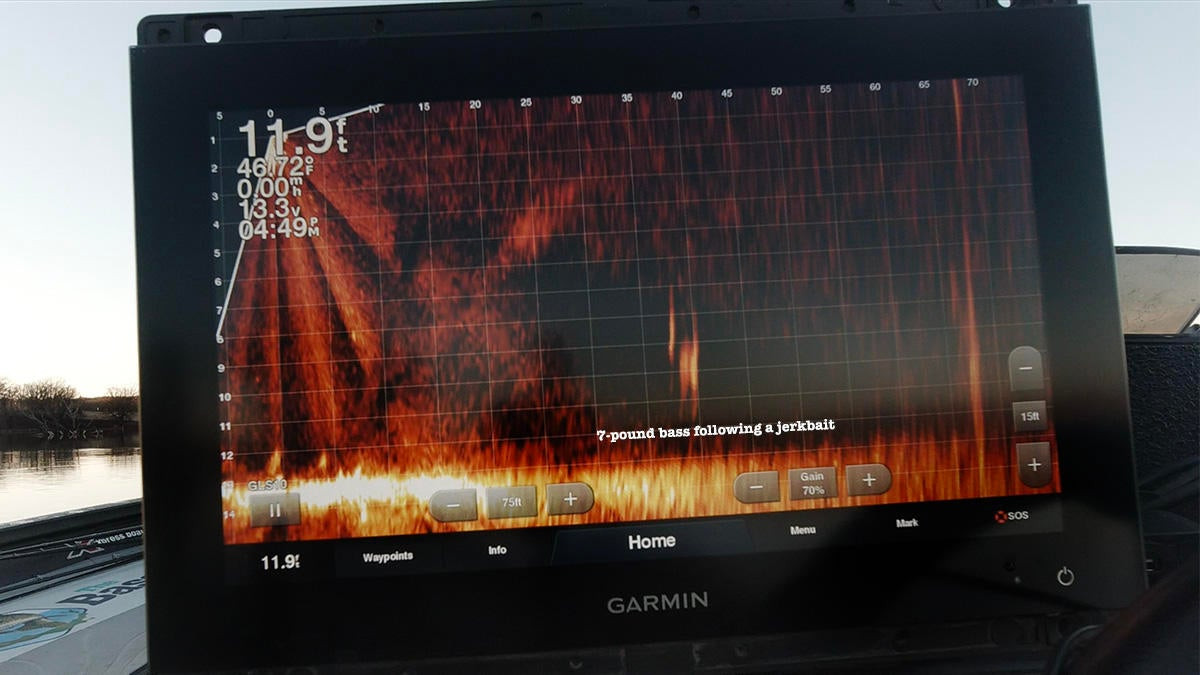
3. One fish will follow a long ways and often not bite
Now having said that, the hardest thing to get used to with LiveScope, is how many fish will come sit and stare at your lure and never bite it. They will follow it for 80 feet and never bite, just curiously tracking it until they finally veer off. I think a single fish is curious. It can be impulsive. But it’s also probably debating if your lure is real, or if it’s going to make a move that will cause it to become aggressive.
Having crappies rise up, sit even with my bait on the screen and then slowly sink back down not reacting to anything I do is frustrating. Having a bass follow my swimbait from 70 feet out and not bite is frustrating.
I have caught plenty of single fish, but it is interesting how more than one fish improves your odds dramatically.
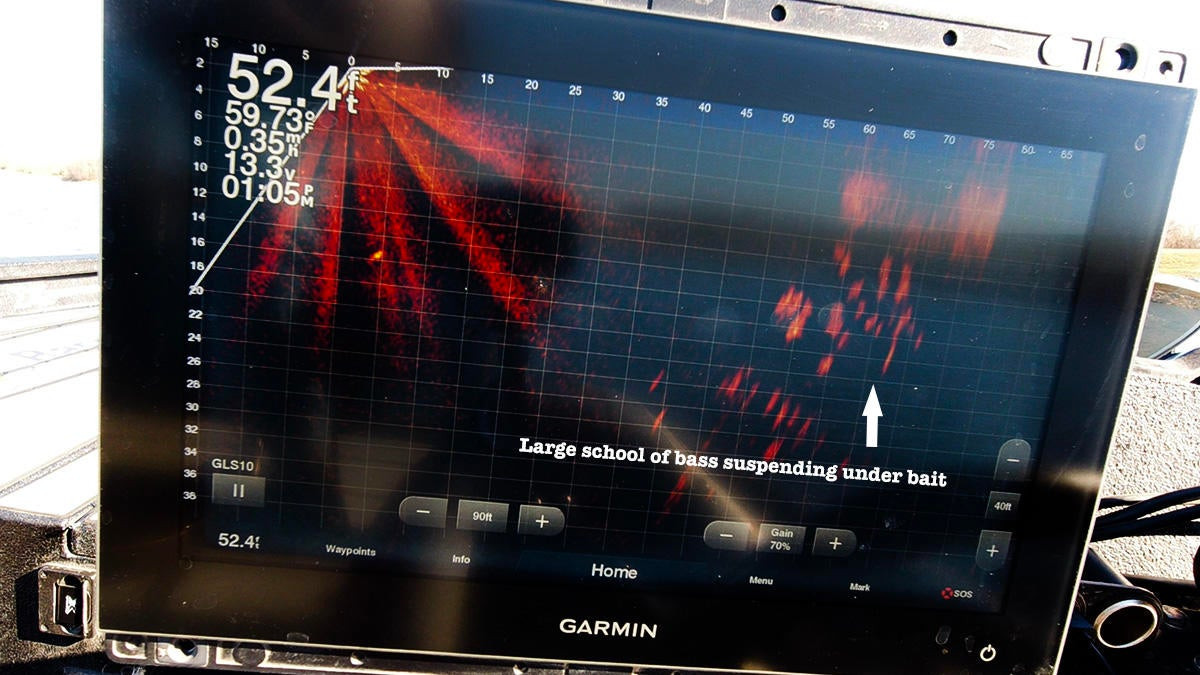
4. Two or more fish will almost always eventually bite
The easiest way to get a curious single bass or crappie to bite while watching on LiveScope is to do it in front of his buddy. While gamefish are curious and impulsive, they are uber competitive. You put two or more fish together and get a bait in front of them, suddenly one of them has to have it. I think at this point, it’s not even impulse that’s making them bite. It’s survival, making sure they get it first so their buddy doesn’t get the last one.
I think we saw this for years where we would mark a big school of fish offshore on side scan, and then we would throw at them a bunch of times before one would bite. After that, it was a bite every cast. The school wasn’t hungry or feeding. But they are always on the verge of being competitive. When the first one’s impulse hits, then it’s every fish for itself and the competition is on.
On LiveScope, I’ve had wolf packs follow a swimbait or even a jerkbait, and when one starts speeding up and sharking on it, they all do it. And you can call your shot just watching their behavior, knowing a hookup is imminent.
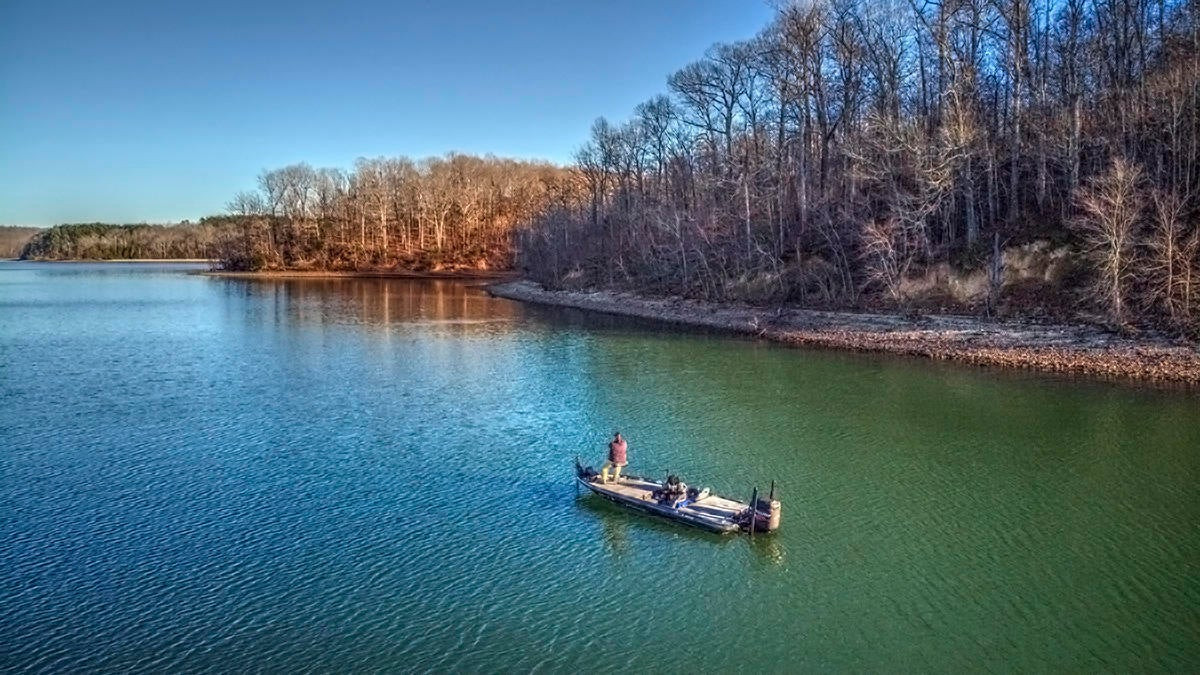
5. Fish are the most aggressive early in a retrieve
For some reason, it seems like you can really get the fish swiping and swatting at a lure right when it first gets in front of them. And your odds are really high of hooking that fish then. As it follows it more, the more you have to be clever with your actions. I find that speed can sometimes make them more aggressive and bite. But as the lure gets closer on the retrieve, you run out of room to get the fish to commit, and they turn off.
When I’m crappie fishing, I always start away from the fish and the cover. In the fall, I was picking crappie off casting and pitching to cover with 3/32-ounce jigs and getting the fish to react to my presentation from a distance. They were way more aggressive when I stayed off and first starting dropping the jig right in their face. And that initial drop often gets the big ones to bite.
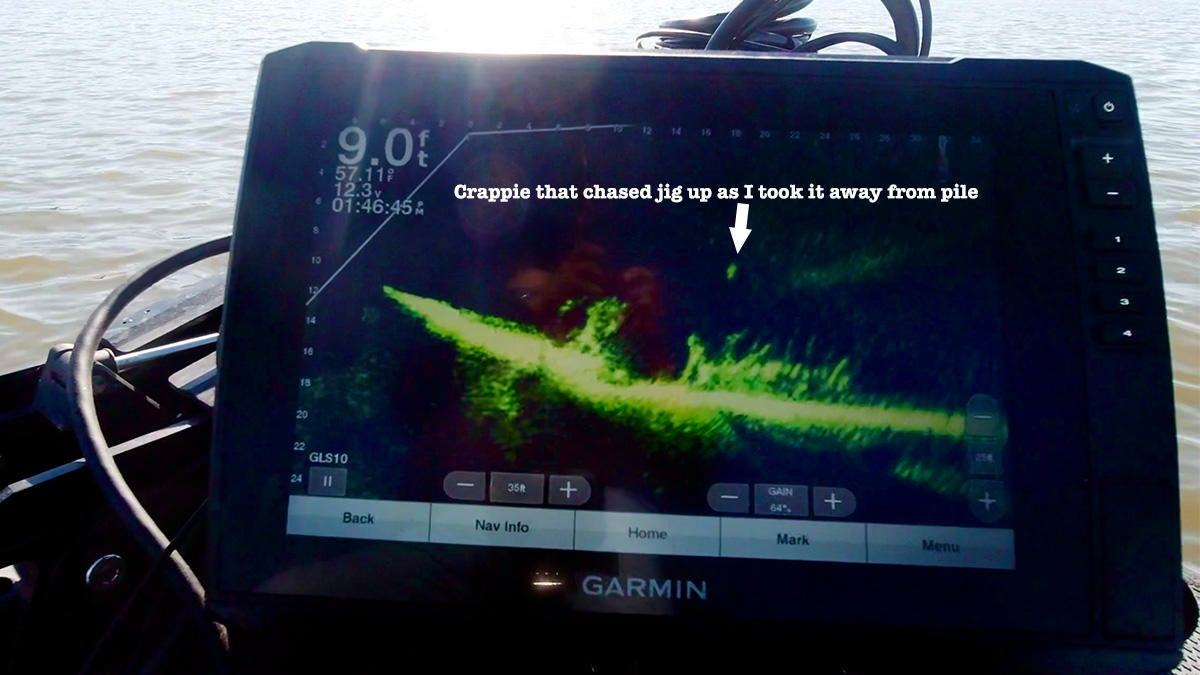
6. Fish don’t like things to be taken away from them
I made a video this summer about using speed to get suspending bass to bite. I would watch the fish on my LiveScope. As they started closing the gap on my swimbait, I would speed up. Then they would speed up. Then I would speed up more, and I was suddenly hooked up.
Crappie anglers see the same thing. You drop the jig down on them. The fish starts inching towards the jig. So you raise it up real slow, just sort of pulling away from them, and the fish flashes and gulps the jig.
I think you see the same thing in an aquarium. The goldfish tries to swim away from a predator fish. It speeds up in an effort to escape, which makes the bass charge more aggressively. We’re just getting to watch it happen on our screen like we would if we were fishing in an aquarium.
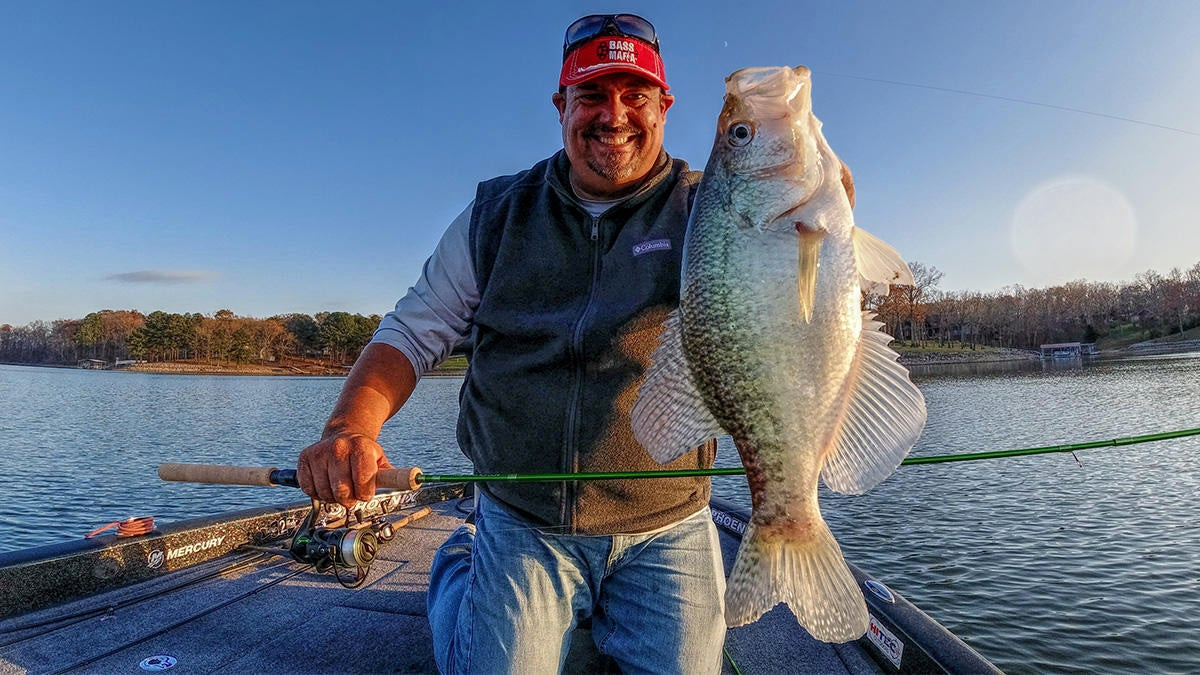
7. We move our lures too much
It’s crazy how much I learned about what fish don’t like with LiveScope. Seeing it happen with real-time sonar, I could see when I popped the jig aggressively, they spooked off or sunk back down. And other times, when I just sat there and tried to hold it as still as possible, they would eventually thump it.
That’s not to say popping your jig won’t get a crappie to react. I catch a ton dropping a weight down with a jig below it. It sinks super fast and gets right in front of the fish quick and a lot of times, they will thump it as soon as it stops just above them before you even have time to think about moving it. They obviously reacted to the bait. But I think they reacted to the abrupt stop as much as the movement.
With a big swimbait or glide bait, I’ve talked to guys a lot about stuttering the bait. I do it with hard baits and soft baits alike. I will reel the bait slowly like normal. Then I might speed up for a couple of turns then just stop turning the handle a split second and start again. It gives the bait what I call a “hiccup,” and I get so many bites right after that stutter on swimbaits.
It’s a break in the continuous movement without it being a big herky jerky move that throws up a red flag to the fish that this meal might not be real.
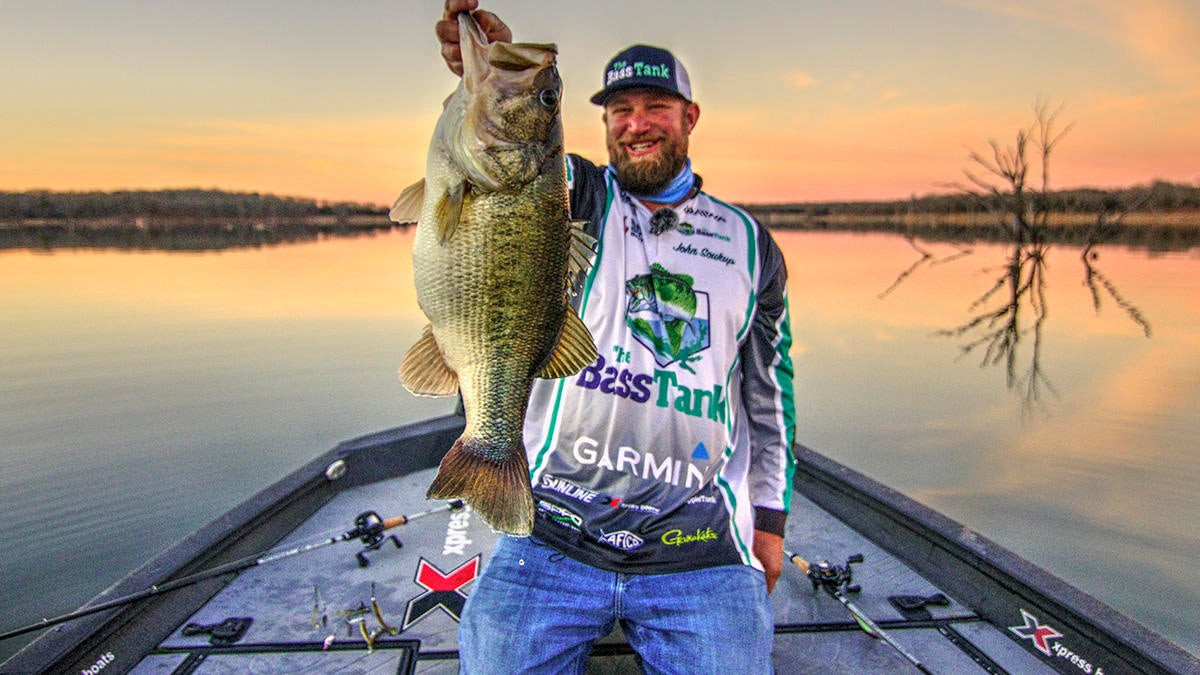
8. Fish Constantly Move (even in the winter)
I can’t tell you how mind boggling it has been to see that fish are always moving. Yeah they might be holding on that brush pile, but it’s pretty rare that they are just sitting still. They will sink down and go to the bottom, then come up and suspend in the top. Then they will be off to the left side of it.
I’ll catch a crappie, unhook it, drop it in the livewell and then get back up to cast and the school has moved over a few feet. I think they meander around with bait a lot more than we give them credit.
While in Oklahoma filming on a cold winter day this month, I watched large bass swim around above, in and under schools of bait. Sometimes just rubbing along the bottom under them. Sometimes suspending right above or below. But the bait was always moving and so were the bass even though the water was a cold 45 degrees. You’d make a cast, and by the time the lure landed, you weren’t lined up with the bass anymore because he moved two feet to the left while your lure was in the air.
I think the precision is the greatest attribute of LiveScope. I can put the fish and my lure in direct contact with one another. Without it, you’re hoping that the two are randomly going to collide at some point. It’s fine when you have a group of 20 or more fish found on a small isolated spot. When you’ve got a handful of fish roaming on a massive reservoir, however, the chances your lure and that fish are going to intersect on a cast are greatly diminished.
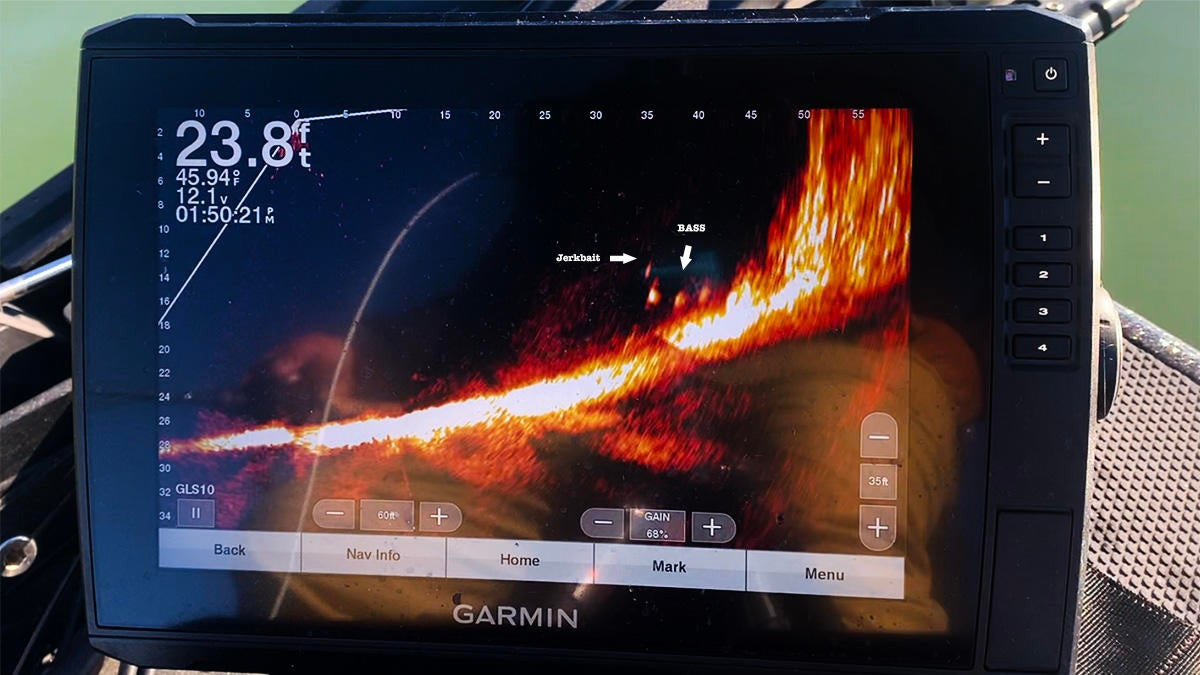
9. Big Fish Are Often Where You Can’t See Them
One thing that has floored me about some big fish catches this year has been how they appear out of nowhere and wallop your lure.
Crappie fishing this spring in the post spawn, I was fishing some cover in the mid-depth range. Small pieces of cover spread out over a flat in about 10 feet of water. The cover was not big enough to hold big schools of crappie but what each piece did hold was a big crappie or two.
You wouldn’t always see them. In fact you often would see a small fish or two around the cover, but when you dropped your jig down to it, a whale would appear out of the cover on LiveScope and thump your jig. I think the big ones are concealing themselves a lot more when they do sit still. I think they will use bait as cover. I think they will use low-to-the-bottom pieces as cover more than a big bushy piece. They can hunker down on the bottom and use the bottom contour as cover as well. On your electronics it can be hard to make these fish out until your lure gets them to raise up.
Same thing in bass fishing. They will get so close to the bottom, that you will be able to wipe the mud off of them.
I saw a 10-pounder caught two weeks ago on LiveScope that looked like a small rock on the bottom just barely moving. An A-Rig went over its head and it showed itself and thumped it. It turned out to be a giant 10.82 largemouth. And when we got it up in the boat for pictures, I was able to wipe mud off its belly.
The other afternoon I was fishing on Kentucky Lake. I wasn’t marking any bait or fish but it was a place where I have caught them hundreds of times in the winter. I worked my jerkbait down over a big boulder. As I did, three arches chased my bait out on my Livescope Screen, and I bagged a nice smallmouth I couldn’t see on my screen at all when I made my cast.
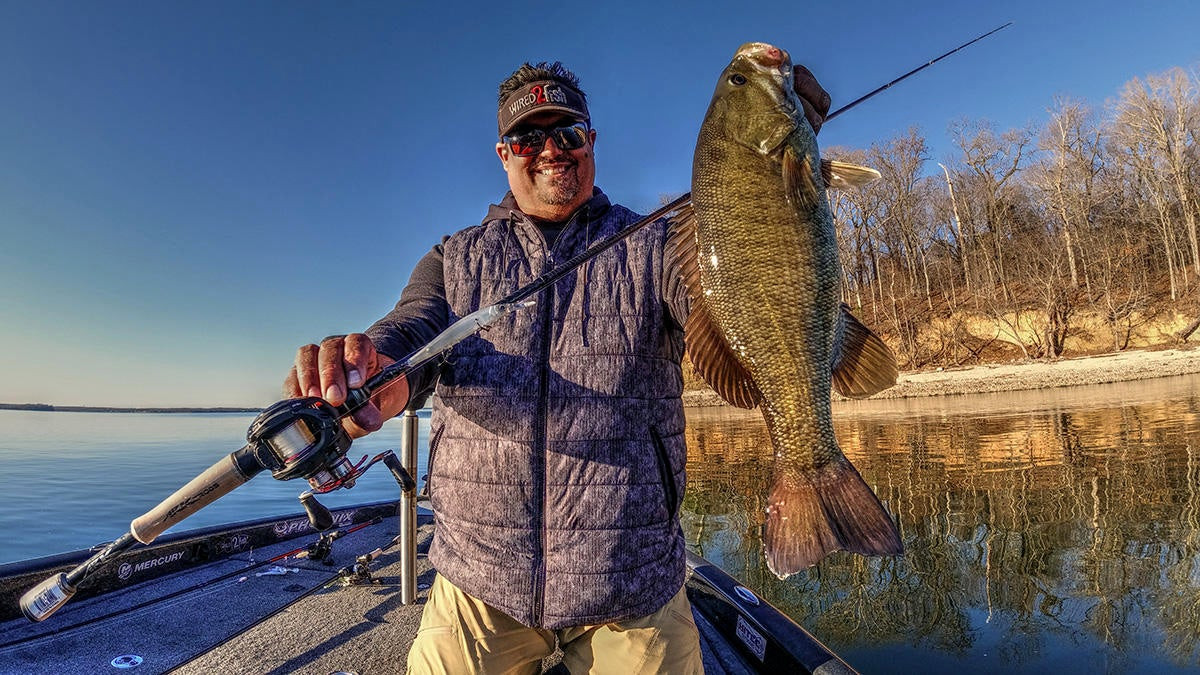
10. Presentation and Speed Matter More than Color
I have never been a crazy color guy. I usually stick with a very small selection of colors and just keep throwing them because, they always seem to work for me. This has become more evident with LiveScope.
I would cycle through various colors and each one would catch them equally well as long as I lined up my presentation with the fish and fished the lure at a speed they liked. Sometimes with crappie fishing, the jig can swing through or swim through too fast and they don’t react other than following it a few feet. This is when that stutter can work. Just pop the slack a little to get it to stall and rise and fall in place without swimming away.
Sometimes you had to just hold the jig in their face until they would bite. Sometimes a tiny hair jig gets twice as many bites as a heavy plastic tail.
Same with bass. I’ve gone up and down on weight and size to slow or speed up the lure more than I have changed the color of the lure. I’ve done things like weight jerkbaits, lighten swimbaits and add weight to Alabama Rigs to get more speed to trigger followers to bite.
Anymore, color is pretty far down on the list when I’m experimenting with fish not reacting and biting. Now it’s more about speed and presentation because I’m getting direct immediate feedback on LiveScope about the fish’s mood, reaction and willingness to bite.
While LiveScope and other new real-time imaging solutions are not cure alls for fishing, the amount of feedback about fish behavior they can provide is fascinating.
I always loved sight fishing for bass as a kid. I use to wade for redfish as a boy and loved that more than anything. Not because I thought it was easier to hook them if I could see them, because it often was harder in fact, but because I was getting to see first hand how the fish reacted to the different things I did.
That’s where LiveScope and the new real-time sonar innovations have reinvigorated me for fishing. I feel like I’m watching and interacting with the fish again like when I was a kid. It’s actually redefined fishing for me.
After spending a year watching fish behavior on my Garmin screens, I now define fishing as the following:
Fishing—coaxing curious creatures into reacting impulsively to enticing counterfeits.
Merry Christmas! And may you coax a bunch of curious big fish in the New Year!
Stay tuned for some incredible video footage that some of these pictures came from.











